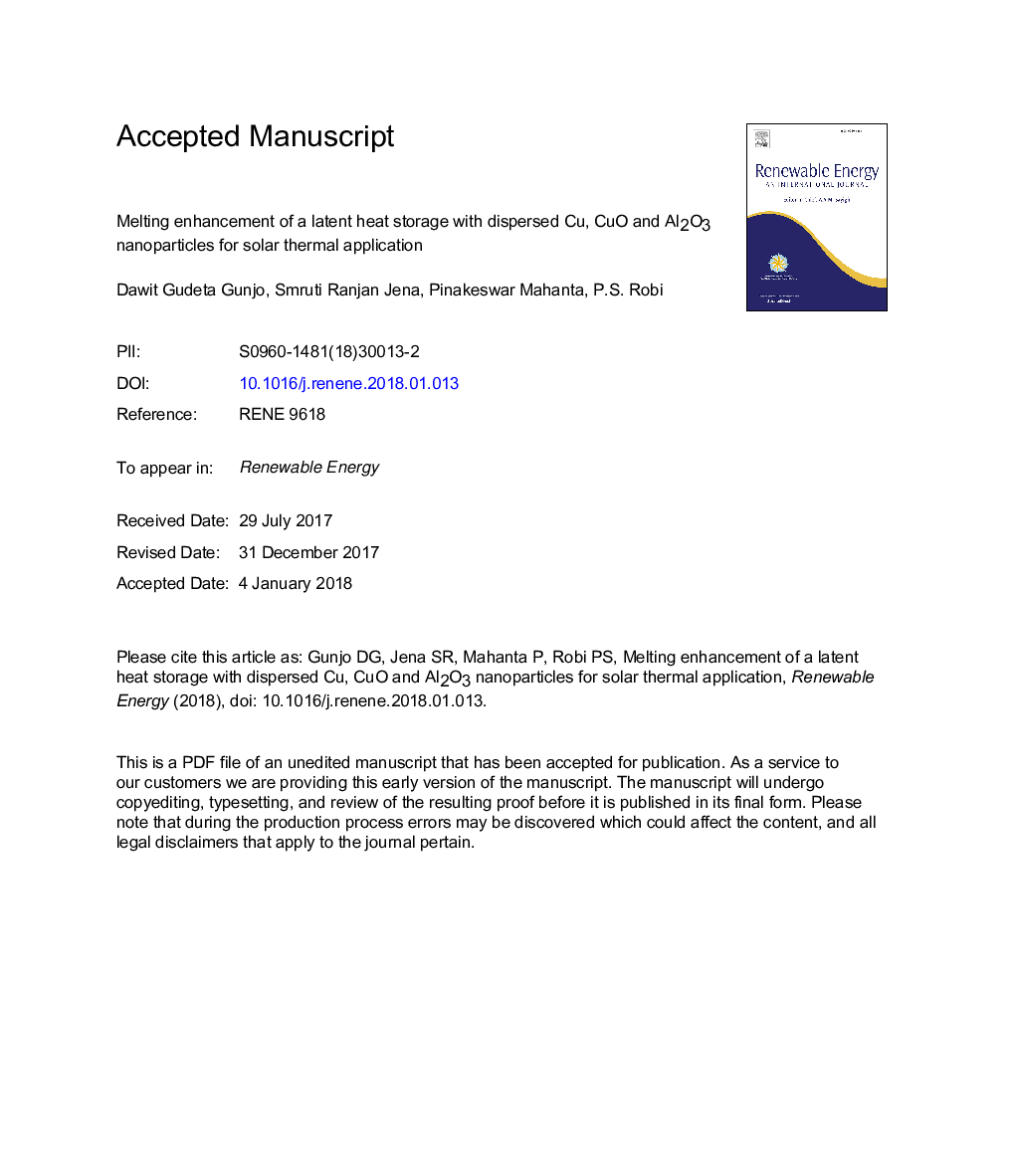| Article ID | Journal | Published Year | Pages | File Type |
|---|---|---|---|---|
| 6764883 | Renewable Energy | 2018 | 43 Pages |
Abstract
The performance of all latent heat storage system depends on the quality of phase change material used. In the present study, paraffin-based nanofluid dispersed with 5% of Cu, 5% of CuO and 5% of Al2O3 nanoparticles are used to investigate its effect on the storage characteristics. A 3-D numerical model of a shell and tube regenerative type latent heat storage is developed using®COMSOL Multiphysics 4.3a to predict the average temperature and melt fraction of paraffin-based nanofluid. The validation with the established pieces of literature and experiments indicated a sound agreement. The effect of adding nanoparticles on melting/solidification rate and energy storing/releasing rate are also studied. The result revealed that addition of 5% of Cu, 5% of Al2O3 and 5% of CuO nanoparticles improved the melting rate by 10 times, 3.46 times and 2.25 times and the discharged rate by 8 times, 3 times and 1.7 times, respectively compared to the pure paraffin filled latent heat storage system. However, it decreased the specific heat and heat of fusion which reduced the sensible and latent heat storing capacity. Additionally, orientations of cylinder and tube arrangement are also studied numerically using paraffin as phase change material.
Related Topics
Physical Sciences and Engineering
Energy
Renewable Energy, Sustainability and the Environment
Authors
Dawit Gudeta Gunjo, Smruti Ranjan Jena, Pinakeswar Mahanta, P.S. Robi,
